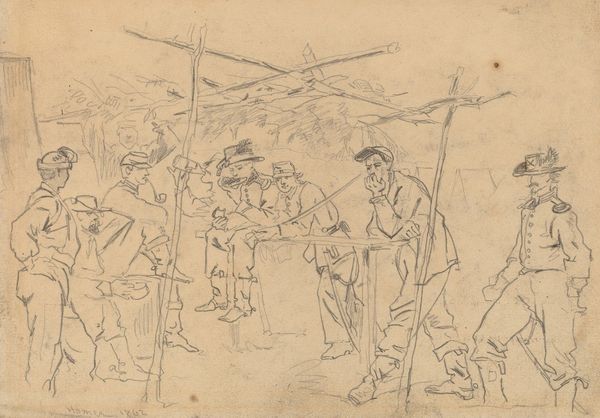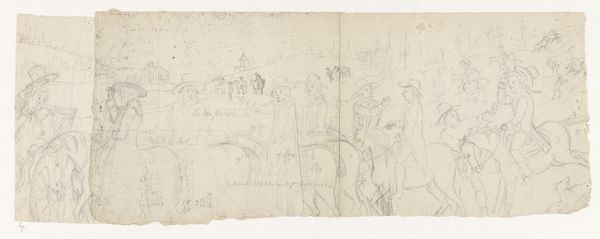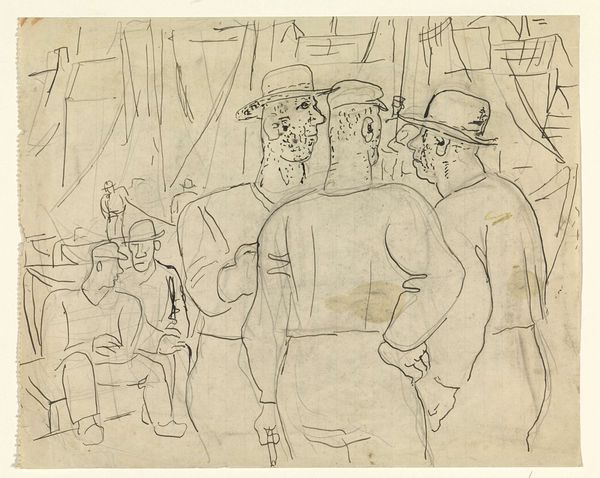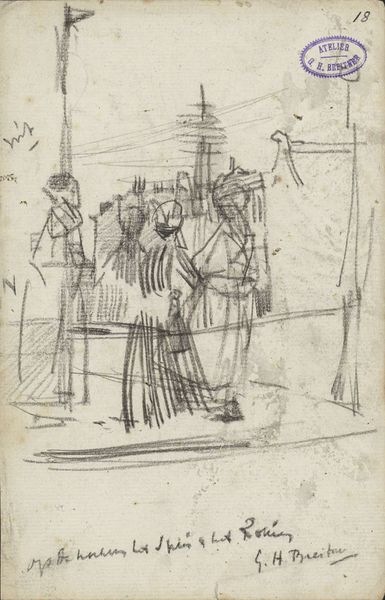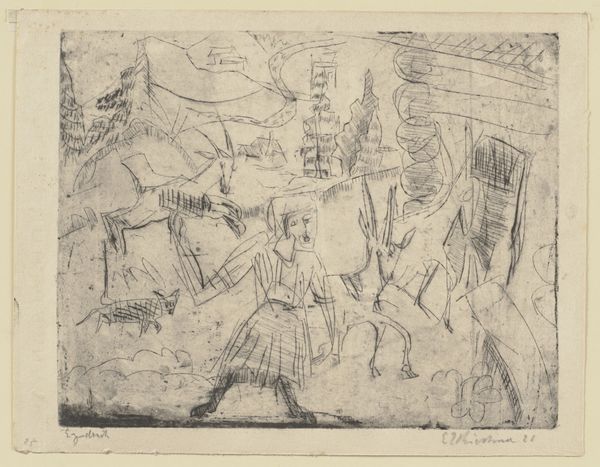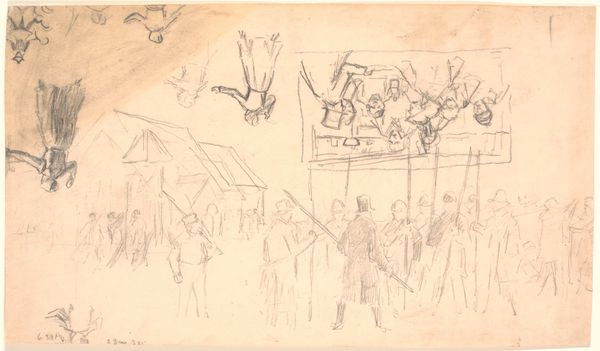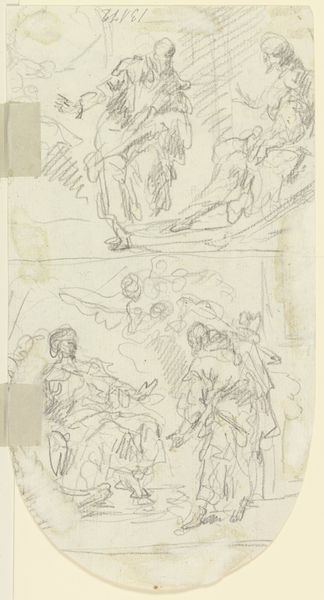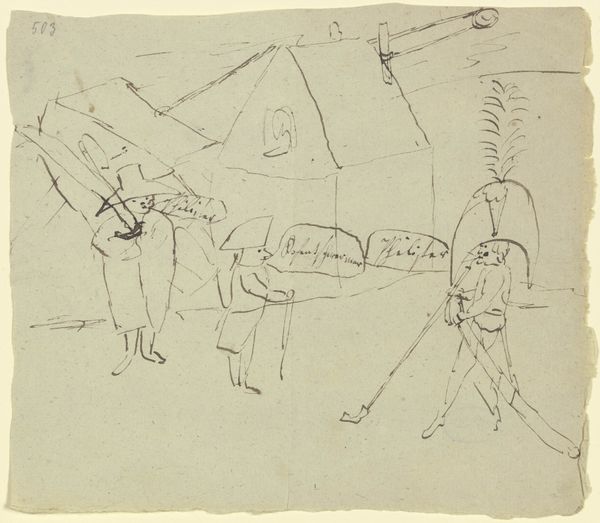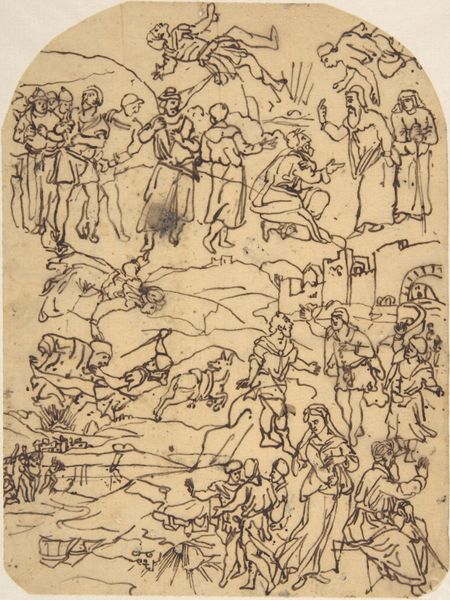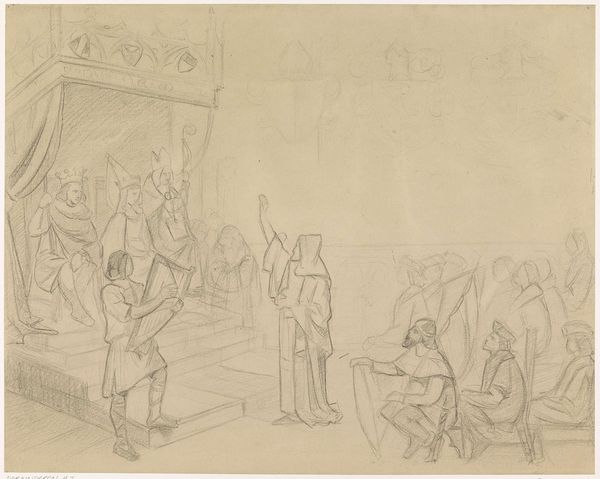
drawing, ink
#
drawing
#
toned paper
#
light pencil work
#
narrative-art
#
pen sketch
#
incomplete sketchy
#
landscape
#
figuration
#
personal sketchbook
#
ink
#
ink drawing experimentation
#
pen-ink sketch
#
sketchbook drawing
#
storyboard and sketchbook work
#
sketchbook art
#
modernism
Dimensions: height 208 mm, width 258 mm
Copyright: Rijks Museum: Open Domain
Curator: This ink and pencil drawing, created on toned paper sometime between 1891 and 1941, is titled "Vissers in een haven," or "Fishermen in a Harbor" by Leo Gestel. It's currently held at the Rijksmuseum. Editor: Immediately, I’m struck by the sense of immediacy and work here, how the artist is almost mapping the space occupied by these figures – it feels quite dynamic for such a simple composition. Curator: Absolutely. And I think that dynamism stems directly from the sketch-like quality and use of pen and ink. There’s a directness to the application, highlighting the act of drawing itself – of translating observation into marks on paper. Consider the economic realities of this era: readily available, relatively inexpensive materials facilitating artistic production for wider audiences beyond elite patrons. Editor: Yes, and considering Gestel’s background, born into a family of artisans and with connections to the art dealer, Carel van Lier, we see how his work operates within a particular cultural framework. It's important to examine how institutions, like the art market and museums, ultimately shape his production. What kind of narratives did harbor scenes evoke, particularly around labor and identity during that period? Curator: The figures themselves speak to that. See how they're depicted without idealized features; they're working-class men engaged in the toil of the sea. Gestel’s mark-making transforms them beyond individual portraits. Each fisherman becomes symbolic of a segment within the harbor economy. The rapidly executed lines give immediacy and represent the transient lives connected to it. The toned paper is almost a kind of cheap canvas on which his figures populate, giving texture and weight to the scene. Editor: I agree; there is the crucial recognition here of how the socio-political environment impacted art. Gestel’s “Fishermen in a Harbor” is a representation but also part of a bigger story: of societal roles, economic structures, and even the museum’s role in displaying these stories now. The visual language reinforces its place as document and observation. Curator: It certainly prompts questions about artistic skill, the subject represented, and how affordable and available materials influence artistic expression during these important decades. Editor: Agreed, the way we view "Fishermen in a Harbor" shows the interconnection of art with public consciousness as its artistic statements meet socio-economic interpretation in places such as the Rijksmuseum today.
Comments
No comments
Be the first to comment and join the conversation on the ultimate creative platform.
